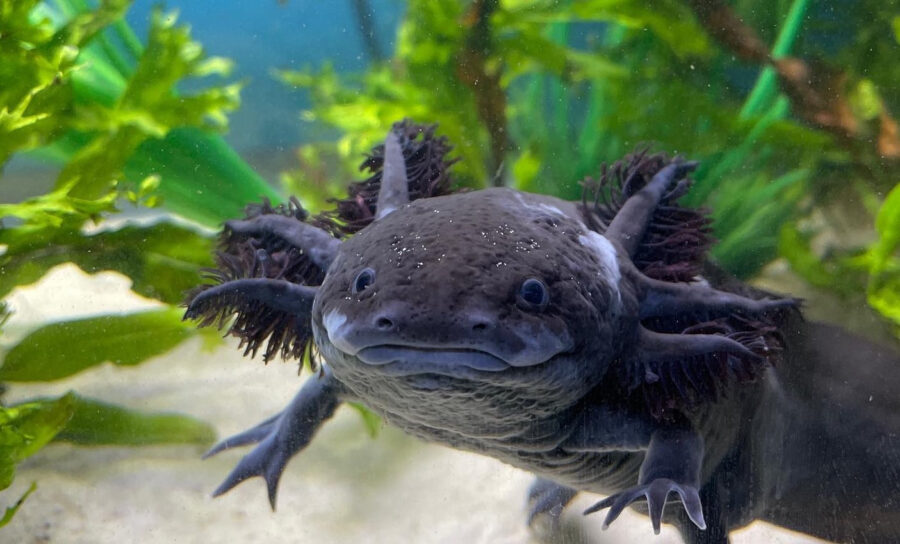
Axolotls are fascinating aquatic creatures that require specific care to thrive. In this comprehensive guide, we’ll walk you through the essentials of axolotl care, ensuring that your pet lives a healthy and happy life.
The Aquarium
Choosing the right aquarium for your axolotl is crucial for its well-being. We recommend a minimum tank size of 110 liters (29 gallons) per axolotl. However, it’s best to opt for the largest tank possible, such as the 180 liter (40 gallon breeder) tank. Remember, bigger is always better for axolotls.
Axolotls produce a significant amount of waste, leading to an increase in nitrate levels in the water. To prevent stress in your axolotl, it’s crucial to keep the nitrate level below 20 ppm. Larger water volumes allow for better dilution of nitrate, making it easier to maintain appropriate levels.
When choosing a tank, opt for a longer and wider tank rather than a tall and thin one. Axolotls prefer floor space over open water, so providing ample room for them to roam is essential. To prevent accidental jumping, keep the water level a couple of inches below the tank’s rim or use a lid. If using fans to cool the tank, ensure the lid is breathable, such as an egg crate.
Substrate
Choosing the right substrate for your axolotl is crucial to prevent any health risks. Avoid using loose substrate, such as gravel or small rocks, as axolotls may ingest them, leading to impaction. Instead, opt for a very soft, fine sand with less than 1 mm grain size. This type of substrate poses the least risk. However, it’s important to wait until your axolotl is at least 15 cm (6 inches) long before introducing sand as younger axolotls may have difficulty passing it safely.
Alternatively, you can have a bare bottom tank, which is easier to clean but may not provide as much grip for your axolotl. Another option is using rocks that are significantly larger than the axolotl’s head. If you prefer a more aesthetic look, you can use untreated tiles to decorate the tank.
Habitat
Creating an enriching environment is crucial for your axolotl’s well-being. Providing plenty of hiding spots, such as caves or plants, allows your axolotl to feel secure. Some axolotls may even interact with bubbles from air stones, adding an extra level of engagement. Rearranging tank decorations from time to time provides a new layout for your axolotl to explore, keeping it mentally stimulated.
Adding live plants to your axolotl tank is another option. However, it’s important to note that axolotls are sensitive to light and require low lighting conditions. Choose plants that can survive in low light and cold water environments, such as Anubias, Elodea, java fern, java moss, and Marimo algae balls. Avoid using any fertilizers as these can be harmful to your axolotl. Since axolotls have semi-permeable skin, they are more susceptible to absorbing chemicals than fish.
By following these guidelines for axolotl care, you’ll create a thriving habitat for your pet and ensure its long-term health and happiness. For more exciting news and informative articles, visit HOT NEWS DAY. Stay tuned for more secrets to a fulfilling and rewarding pet ownership journey!